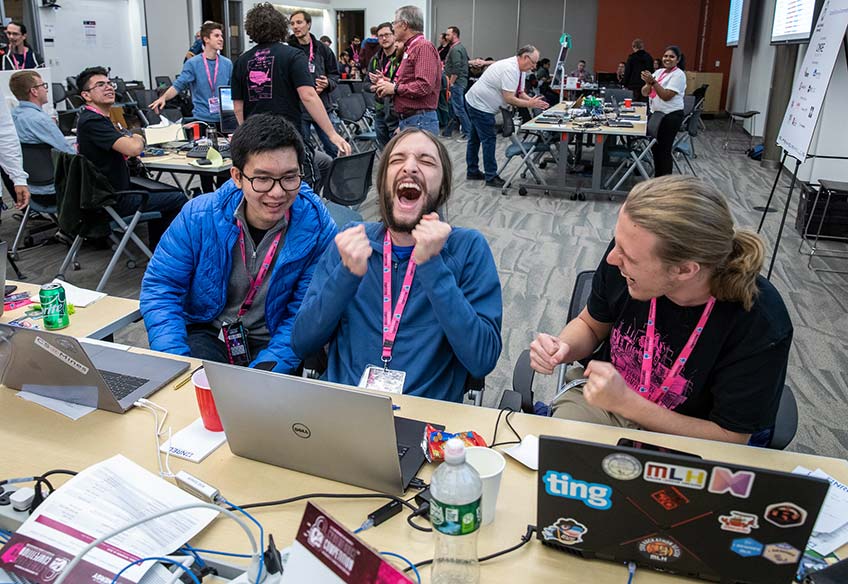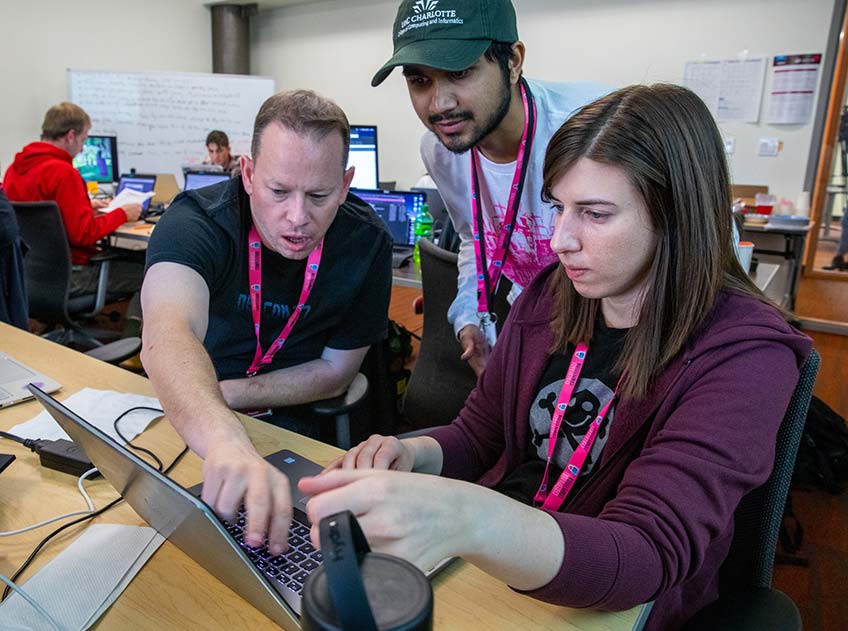CyberForce Accelerates the Next Generation of Energy Security Defenders
The National Renewable Energy Laboratory (NREL) welcomed six university teams to participate in this year’s U.S. Department of Energy (DOE) CyberForce Competition earlier this month. This was the first year NREL took part in the competition, which included 106 teams hosted at 10 national laboratories across the country.
CyberForce aims to inspire and develop the next generation of energy sector cybersecurity professionals. With billions of new intelligent, connected electronics entering the electric grid every year, the emerging cybersecurity workforce will play an especially important role in defending critical infrastructures. Cybersecurity Ventures predicts that by 2021 cybercrime will cost the world in excess of $6 trillion annually—and that the global shortage of cybersecurity professionals could reach 3.5 million.

On the day before the competition, students had the opportunity to get plugged in and set up their defense systems, tour NREL’s Energy Systems Integration Facility and its cyber-physical emulation platform, and hear inspirational words from NREL Director Martin Keller, Associate Laboratory Director of Energy Systems Integration Juan Torres, and DOE Federal Energy Management Program Director Robert Ivester. NREL Deputy Laboratory Director of Science and Technology Peter Green also provided remarks the morning of the event, just before the competition began. Keller, Torres, Ivester, and Green all stressed the importance of cybersecurity expertise at a time when the electric grid is evolving to become increasingly autonomous, employing smart devices, artificial intelligence, and complex communications.
“Cybersecurity is an especially exciting field to be in because it changes every day,” said Tony Markel, NREL senior engineer and site lead for the competition at NREL. “The technologies are advancing so fast and there will always be a new challenge, a new threat, and a new tool to learn.”

A key theme throughout the event was knowledge-sharing—and processing information in an environment requiring students to think fast. Not only did blue teams score well by communicating with other teams about the threats they encountered and the solutions they employed, but at the end of the event, a debrief session was held for industry experts to provide feedback on all the teams’ strengths and weaknesses. For example, some highlighted strengths were patching known exploits, disabling unnecessary services quickly, and knowing when to avoid entering credentials in the case of a spoofing attack.
Overall, industry experts and event organizers expressed nothing but enthusiasm for the talent and creativity they witnessed behind the screen.
“Through competitions like this, we become better at what we do,” said Green, stressing the significance of the event’s competitive and collaborative nature. “New ideas are generated, and it pushes people to perform at very high level. It’s a very American way of doing things in the way it drives innovation.”
Students from University of Colorado-Boulder achieved the highest score at NREL, landing ahead of the those from Red Rocks Community College, University of Colorado-Colorado Springs, Colorado State University, Carnegie Mellon University, and Colorado School of Mines. DOE announced the University of Maryland as the national winner.
NREL plans to be host again for next year’s competition and extend the opportunity to even more interested teams. CyberForce is co-funded by the DOE’s Office of Cybersecurity, Energy Security, and Emergency Response (CESER); Office of Science; Office of the Chief Information Officer; Office of Energy Efficiency & Renewable Energy; and the National Nuclear Security Administration.
Learn more about NREL’s work in cybersecurity research.
Check out more photos from CyberForce in our event photo album.
Last Updated May 28, 2025
